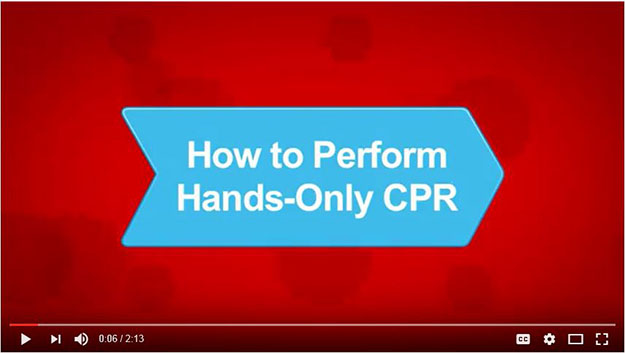Twelve minutes doesn’t seem like a lot of time. It’s about enough time to go through your morning e-mail, take out the trash and feed the dog, or grab a cup of coffee. But if someone’s heartbeat or breathing has stopped, 12 minutes means the difference between life and death. On average, it takes first responders 8-12 minutes to respond to a 911 call, according to the American Red Cross. The chance of survival for someone in need of defibrillation is reduced by 10% for each minute that passes without it.
Most people who survive those twelve minutes were helped by a bystander.
If you know how to administer cardiopulmonary resuscitation (CPR) or properly use an automated external defibrillator (AED), you may be able to keep someone alive for a few crucial minutes, giving first responders time to arrive and help the patient. You may be able to give someone – a friend, a family member, a neighbor or even a stranger – lifesaving care when seconds count.
Events that affect people’s health can happen in any community, and they could come in the form of natural disasters, man-made events, disease outbreaks, or every day incidents like heat waves and power outages. When they occur, being an active bystander and ensuring that the injured receive help before emergency responders arrive is critical.
Many people want to lend a hand, but they aren’t sure how. People who become CPR and AED certified, even with little or no medical training, can become heroic lifesavers. These valuable skills help improve your community’s health resilience, and in turn, our nation’s health security.
CPR is a technique that can be incredibly useful in any event in which someone’s breathing or heartbeat has stopped. This could happen as a result of a heart attack or a near drowning. But if you have the right skills, you can help save a life in a matter of minutes. Getting certified in CPR can give you those lifesaving skills, but you can learn the basics of hands-only CPR in under three minutes with this quick video .
.

In addition, after just a few short hours, the Red Cross can teach you CPR, how to help in an event where an AED is needed, and get first aid training.
can teach you CPR, how to help in an event where an AED is needed, and get first aid training.
Kick off the summer right and resolve to be ready! Join other communities like yours across the country and work with your family and neighbors to get certified . By becoming more informed and prepared, you can keep one another safe and healthy in disasters and every day.
. By becoming more informed and prepared, you can keep one another safe and healthy in disasters and every day.
To learn more, check out Get ready to help. Become an active bystander. For more information on national health security, visit www.phe.gov/nhss.

